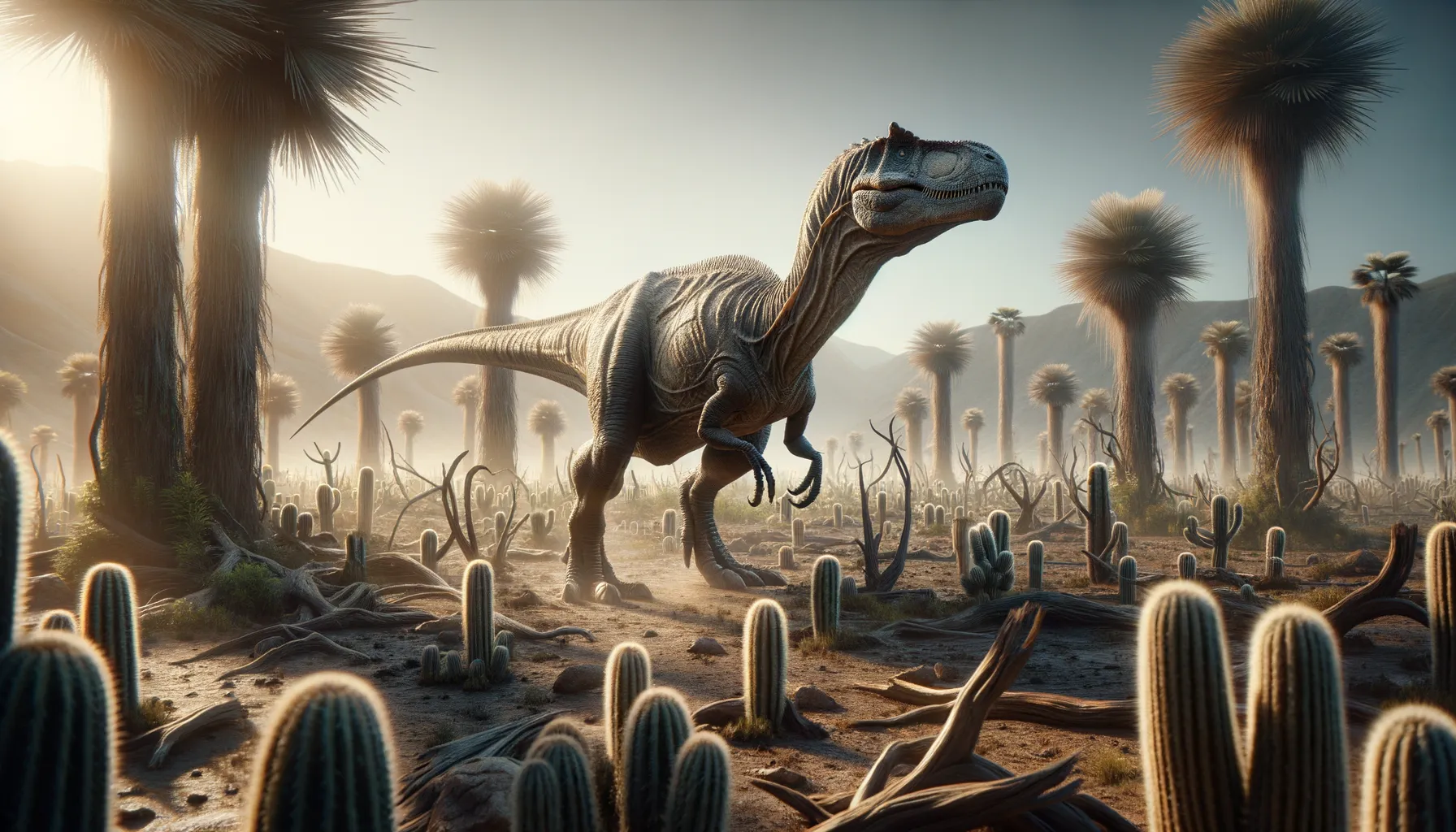
Rileyasuchus
A plant-eating giant of ancient lands.
Period
Cretaceous
Length
Roughly 7 meters from snout to tail.
Height
Approximately 2 meters tall at the hips.
Weight
Around 500 to 600 kilograms.
Rileyasuchus lived during the Cretaceous period and was a mid-sized dinosaur known for its upright posture and strong hind limbs. It was an herbivore, most likely feeding on the low-growing vegetation in its arid environment. Its well-developed senses helped it to detect threats and find food efficiently. Close examination of its fossilized remains has provided valuable insights into its lifestyle and ecology.
Diet
Rileyasuchus primarily fed on a variety of Cretaceous plant life. Its diet would have included ferns, cycads, and other low-growing plants available in its habitat.
Hunting
As an herbivore, Rileyasuchus did not hunt for prey. Instead, it would have foraged for plant materials, using its keen sense of smell to locate food.
Environmental challenges
Rileyasuchus faced environmental challenges such as droughts and fluctuations in vegetation availability. It likely moved in search of food during scarce times. Predators would have posed another challenge, necessitating constant vigilance.
Speed
Moderate, likely around 20 km/h.
Lifespan
Estimated lifespan of 20-30 years.
First discovery
Discovered in 1978 in the Gobi Desert.
Fun Facts
- Rileyasuchus was discovered in a unique site in Colorado, known for its diverse fossil record.
- Despite its fierce appearance, Rileyasuchus was a herbivore, primarily feeding on low-lying plants.
- This dinosaur is part of the Late Cretaceous period, sharing its habitat with various other prehistoric creatures.
- Known for its distinct horned snout, Rileyasuchus was named after the paleontologist who discovered it, Dr. Emily Riley.
- Rileyasuchus is believed to have moved in herds, offering protection against carnivorous predators.
- The fossils of Rileyasuchus have helped scientists understand more about the ecosystem of the Late Cretaceous period.
- Rileyasuchus had a relatively short tail compared to other dinosaurs of its time, which might have improved its balance and agility.
Growth and Development
Rileyasuchus experienced steady growth throughout its life, reaching maturity around 10 years. It is believed that its juveniles grew in groups for better protection. Growth rates were influenced by environmental conditions and food availability.
Habitat
Rileyasuchus inhabited semi-arid regions with sparse vegetation and occasional water sources. It preferred open landscapes that allowed for easy mobility to forage for food. Fossil evidence indicates that it lived in what is now Mongolia.
Interaction with other species
Rileyasuchus interacted mainly in peaceful coexistence with other herbivores. However, it needed to stay alert to avoid predators like theropods. Competition for food with other herbivores would have also been a regular occurrence.
Natural lifespan
It lived naturally around 20-30 years in the wild.
Reproduction
Rileyasuchus likely laid eggs in nests made on the ground. Females would have laid several eggs at a time, possibly caring for them until hatching. Evidence suggests they had specific breeding seasons.
Social behaviour
Rileyasuchus may have lived in small groups or herds, which offered some protection from predators. This social structure also helped them efficiently find food over large areas. Communication might have involved vocalizations and visual signals.
Fossil locations
Fossils of Rileyasuchus have been primarily found in the Gobi Desert. Specific sites have unearthed bones scattered over a wide area, indicating herd structures. These regions provide key insights into Late Cretaceous ecosystems.
